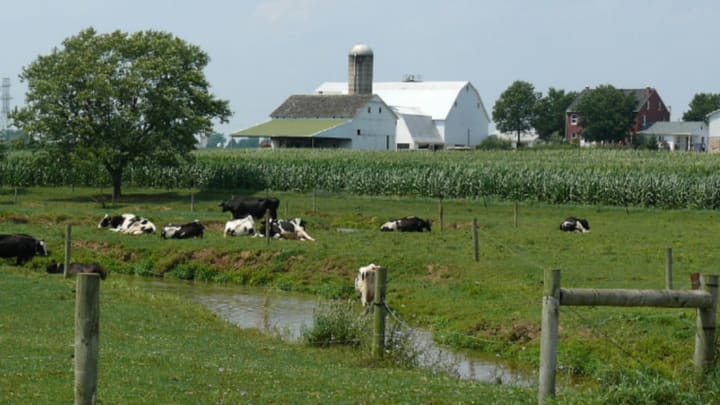Amish Farms Are Really Good at Protecting Kids from Asthma

Some ethnic groups are more asthma-prone than others, but that doesn’t mean it’s genetic. A study of 60 kids on Amish and Hutterite farms found huge differences in asthma between the two groups despite their similar genetic backgrounds, lifestyles, and customs. The study was published in The New England Journal of Medicine.
Asthma and other autoimmune conditions have increased dramatically over the past three decades. Today, around 10.3 percent of all American kids from ages 5 to 14 have asthma, yet there’s still a lot about this condition we don’t understand, like why it happens or if it could be prevented. Some studies have shown that kids who live with dogs are less likely to develop asthma, as are kids who live on farms. But the farm itself seems to make a difference. Previous studies have found that Amish children are only half as likely (5.2 percent) as children in the general population to develop asthma, while those in Hutterite communities have almost double the chance (21.3 percent).
To find out why that might be, researchers recruited 30 kids aged 7–14 from an Amish community in Indiana and another 30 aged 8–14 from a Hutterite farm in South Dakota. They took samples of the kids’ blood and looked at their DNA and immune systems. They also installed dust collectors in the families’ homes and used a vacuum to suck up additional particles from the participants’ living room floors and mattresses. Some of the dust samples were used to test the house’s microbiome, or microbial ecosystem. Others were turned into dust extract and used to treat lab mice, which had already been dosed with compounds that made them sensitive to asthma.
Amish and Hutterite cultures can seem very similar to outsiders. Both groups were founded by immigrants from Central Europe. They have big families and live relatively old-fashioned lifestyles, eschewing things like TV and pasteurized milk. But there is one pretty big difference: the way they farm. Amish communities are divided into single-family dairy farms and use horses for field work and transportation, while Hutterite families use modern agricultural equipment on centralized farms, living slightly apart from where they work. Would the communities’ different farming styles be enough to alter their kids’ immune systems?
For sure. Co-author and University of Chicago geneticist Carole Ober said the team observed a “whopping disparity” in asthma between the groups. Six of the Hutterite children (20 percent) had asthma, but none of the Amish kids did. Their immune systems were very different: Amish kids had more infection-fighting cells called neutrophils and fewer inflammation-promoting eosinophils than their Hutterite counterparts.
These differences were mirrored in the very air they breathed. The authors note that dust from Amish homes was “much richer in microbial product.” And mice treated with Amish dust were far less likely than the others to show asthma symptoms.
The researchers were quick to clarify that a richer microbial ecosystem doesn’t equate to a dirty house. Every home has dust; it’s the contents of the dust that differ. In this case, those contents are altered by Amish houses’ proximity to farms. “Their children run in and out of them, often barefoot, all day long,” Ober said in a press statement. “There's no obvious dirt in the Amish homes, no lapse of cleanliness. It's just in the air, and in the dust."
In the future, the team said, these findings could lead to targeted asthma prevention therapies. "You can't put a cow in every family's house," Ober said, "but we may be able to protect children from asthma by finding a way to re-create the time-tested Amish experience."
Know of something you think we should cover? Email us at tips@mentalfloss.com.